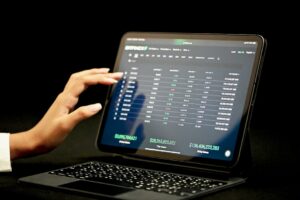Understanding the Fibonacci Sequence in Forex Trading
The Fibonacci sequence is a mathematical concept that has been used for centuries to study patterns in nature and mathematics. In recent years, it has also gained popularity in the world of forex trading. Traders have found that the Fibonacci sequence, when applied correctly, can be a valuable tool for predicting market movements and identifying potential trading opportunities.
The Fibonacci sequence is a series of numbers in which each number is the sum of the two preceding ones: 0, 1, 1, 2, 3, 5, 8, 13, 21, 34, and so on. This sequence has been found to occur naturally in various phenomena, such as the branching of trees, the arrangement of leaves on a stem, and the proportions of the human body. In forex trading, it is used to identify potential support and resistance levels, as well as to determine price targets.
One of the most commonly used tools in Fibonacci analysis is the Fibonacci retracement tool. This tool is used to identify potential levels of support or resistance in a market. To use the Fibonacci retracement tool, a trader must first identify a significant swing high and a significant swing low on a price chart. These swing points are used to draw the Fibonacci retracement levels.
The most commonly used Fibonacci retracement levels are 38.2%, 50%, and 61.8%. These levels are derived from mathematical ratios found in the Fibonacci sequence. When the market retraces from a swing high to a swing low, these levels act as potential areas of support or resistance. Traders often look for price to bounce off these levels and continue in the direction of the overall trend.
For example, if the market is in an uptrend and retraces from a swing high to a swing low, traders would look for price to find support at one of the Fibonacci retracement levels and continue moving higher. Conversely, if the market is in a downtrend and retraces from a swing low to a swing high, traders would look for resistance at one of the Fibonacci retracement levels and continue moving lower.
In addition to the Fibonacci retracement tool, traders also use the Fibonacci extension tool to determine potential price targets. The Fibonacci extension levels are derived from the same mathematical ratios found in the Fibonacci sequence. These levels are used to identify where price may potentially move to after a retracement or a breakout.
Traders often use Fibonacci extension levels to set profit targets or to identify potential areas of resistance or support. For example, if the market is in an uptrend and breaks out above a swing high, traders would use the Fibonacci extension levels to identify potential areas where price may encounter resistance. Conversely, if the market is in a downtrend and breaks out below a swing low, traders would use the Fibonacci extension levels to identify potential areas where price may find support.
It is important to note that the Fibonacci sequence is not a foolproof trading strategy. Like any other technical analysis tool, it is best used in conjunction with other indicators and analysis methods. Traders should also be aware that the market does not always adhere to Fibonacci levels with precision. Therefore, it is important to use proper risk management techniques and to always consider other factors, such as market sentiment and fundamental analysis, when making trading decisions.
In conclusion, the Fibonacci sequence is a powerful tool that can be used to identify potential support and resistance levels, as well as to determine price targets in forex trading. Traders who understand and apply Fibonacci analysis correctly can gain an edge in the market by identifying high-probability trading opportunities. However, it is important to remember that no trading strategy is perfect, and the Fibonacci sequence should be used in conjunction with other analysis methods to increase the chances of success.






